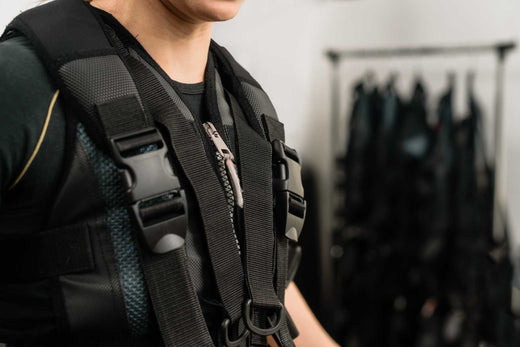Technological advancement has had a heavily imprinted mark on the implementation and efficacy of body armor, bringing Level III body armor to the forefront as Level 3A has been reduced to secondary.
This article presents a deep insight into Level III body armor by examining its capabilities and areas of application.
Introduction to Level III Body Armor
Level III body armor has been developed with technology that improves its efficacy against rifle-caliber bullets through materials science and manufacturing processes.
Projectiles with a velocity of up to 2780 feet per second, including the M80 7.62x51 Nato, can be intercepted. This includes personal armor for transportation.
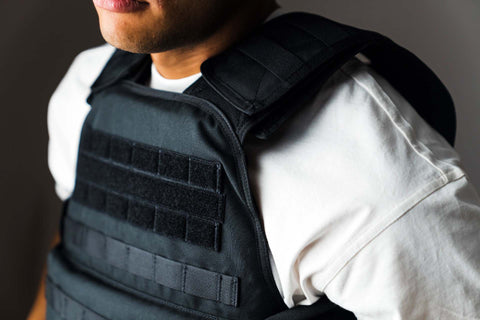 Capabilities of Level III Body Armor
Capabilities of Level III Body Armor
Level III body armor balances protection and practicability. It protects the wearers from all common rifles encountered in modern wars and law-enforcement situations.
- Rifle-Caliber Protection: Developed to withstand the impact of a full-metal jacket rifle-caliber bullet such as the 7.62x51mm (M80) FMJ, which is typically fired from assault rifles similar to the AK-47.
- Limitations: Typical Level III armor is an effective full-proof against ammunition from most rifles but still has piercing rounds within the M2 AP 7.62mm x 63mm or 7.62 x 54R API (BXN) from a Dragunov Sniper Rifle.
Applications and Users
Level III body armor is the preferred choice for a wide range of professionals facing threats from firearms:
- Law Enforcement and Security: Police officers, prison guards, and federal agents, including those in the FBI and Border Patrol, rely on Level III armor for daily protection.
- Military Personnel: Soldiers and tactical units wear Level III armor when they might encounter high-caliber rifle fire.
- Civilian Use: Individuals in high-risk environments or occupations also utilize Level III armor for personal protection.
Advantages Over Other Armor Levels
Compared to Level 3A and Level IV armors, Level III offers a balanced mix of protection, weight, and cost:
- Protection vs. Handguns and Rifles: It surpasses Level 3A armor in its ability to stop rifle rounds, making it more suitable in environments where such threats are prevalent.
- Weight and Concealability: Level III armor is lighter and easier to wear covertly than the heavier Level IV armor.
- Cost-Effectiveness: Unlike the more expensive Level IV armor, this provides a more affordable option with substantial protection against high-powered rifles.
Real-Life Examples of Effectiveness
Incorporating real-life examples, Level III body armor has been credited with saving lives in numerous incidents:
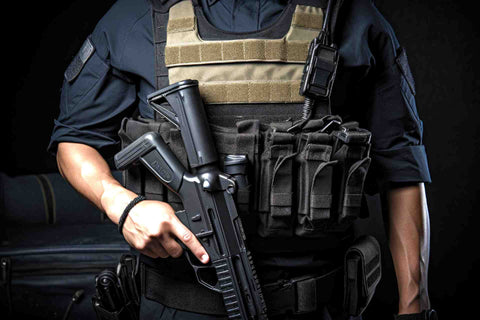
-
Active Shooter Incidents
In several active shooter events where officers were wearing Level III vests, they were able to turn toward the armed assailants with rifles. They were able to neutralize the threat without much injury. For example, when a shooter is identified, the heavily armed police officers are capable of suppressing and disarming him, employing a high-powered rifle that is capable of withstanding the shots of a conventional bulletproof vest.
-
Military Operations
-
Border Security Operations
Border control agents have faced gunfire from criminal cartels with the use of weapons that are usually found in the military. Level III body armor is now worth lifesaving in such situations as it has performed to the expectations that it would stop bullets that would have otherwise been fatal. More recently, in a specific incident, an officer took seven bullets in their chest, yet they survived because of the life-saving wonders of the Level III vest.
-
Civilian Self-Defense
One of the most significant developments in the personal security field has been the availability of Level III body armor. Civilians, especially those working in high-risk areas or fields like private security, have also experienced protection from it. In one case, the private security contractor was waylaid, and his convoy evaded during a high-value commodities movement patrol. One of his Level III armor pieces was riddled by many rounds of rifle rounds, sparing him major injuries and allowing him to narrowly escape the ambush.
-
Tactical Training Accidents
In force-on-force training exercises, when real ammo is expelled as a prop to imitate actual battle conditions, level-three body armor has been credited for preventing serious injuries and fatalities. However, during a training session, a member wearing the Level III armor was hit by a stray discharge stopped by the plate, showing the armor's ability even during training.
Level III body armor is a serious step from the previous standard, with the ability to stop bullets.
Such a situation has become apparent with the wide-scale adoption of this technology by law enforcement, military personnel, and civilians attesting to its effectiveness in safeguarding lives against an ever-growing threat from rifle-caliber firearms.
Continuous innovation in body armor technology has contributed to Level III armor being at the core of protective gear such as vests, helmets, and other critical gear worn by those sometimes occupying hazardous areas.
Soft Body Armor Vs. Hard Body Armor
Understanding the key differences between soft and hard body armor would be critical. These differences usually involve the materials, the extent of protection, flexibility, weight, and the intended engagement scenarios.

Soft Body Armor
Soft body armor is designed for flexibility and comfort but is mostly used to stop handgun rounds. The vest uses weaves or laminations of fiber layers that absorb and divert the impact force, cushioning the body from bullet strikes.
- Lightweight and Concealable: The soft armor is minimalistic and lightweight, easily concealed under clothes. This makes it suitable for full-time use by police officers or regular people during their everyday activities.
- Flexibility: It adjusts to the body, providing more comfort and freedom than hard armor.
Hard Body Armor
Hard body armor is made from various structural materials, such as ceramic, steel, or polyethylene. It's built to withstand high-powered rifle bullets and provides more protection than a regular bulletproof vest.
- Higher Protection Level: It blocks the gun penetration of more powerful firearms, including rifles. This is why it can be applied during conditions of high risk.
- Durability: Hard materials have more resistance to damage than the fabric compositions involved in soft body armor materials.
Choosing Between Soft and Hard Body Armor
Protection Levels
The distinctive feature is the materials used and the intensity of protection offered. Soft body armor, including bulletproof vests and plates, is typically rated as Level 3 or more advanced, which protects against high-velocity rifle rounds. The lightest vest type is also known as soft body armor and is used in Level 3A and below. It is used to prevent handgun bullets. It is important to mention that there is no Level 3 soft body armor - soft body armor is listed on a Level 3A and below scale.
Decision Factors
Whether to pick soft or hard body armor depends directly on the wearer's needs, including the threat level, required mobility, and the need to conceal oneself.
Level 3A, Level 3, and Level 3+ Body Armor Differences
The National Institute of Justice (NIJ) sets standards for ballistic resistance in body armor. Levels 3A and 3 are distinct protection grades defined by the NIJ, while Level 3+ is not officially recognized and varies by manufacturer.

Level 3A Body Armor
Level 3A body armor is designed to protect against common handgun rounds, including up to .44 Magnum. This level is generally made from soft armor materials, making it lighter and suitable for more concealable wear.
Level 3 Body Armor
Level 3 body armor offers protection against high-powered rifle rounds and is typically used by law enforcement and military personnel. Due to its materials and construction, this level is considered hard armor.
Level 3+ Body Armor
Although not officially designated by the NIJ, Level 3+ body armor provides enhanced protection beyond Level 3 standards. The specifications for Level 3+ armor vary by manufacturer and target specific advanced threats.
Comparison Table: Level 3A, Level 3, and Level 3+ Differences
Here's a comparison table to highlight the key differences between Level 3A, Level 3, and Level 3+ body armor based on various attributes:
|
Attribute |
Level 3A |
Level 3 |
Level 3+ |
|---|---|---|---|
|
Caliber Tested |
.357 SIG / .44 Magnum |
7.62 x 51mm FMJ (M80) |
Varies by manufacturer |
|
Bullet Weight |
125 gr (.357 SIG) / 240 gr (.44 Mag) |
147 gr |
Varies |
|
Bullet Velocity |
1,470 FT/Sec |
2,780 FT/Sec |
Varies |
|
Armor Type |
Soft Armor Insert |
Hard Armor Insert |
Hard/Soft (Varies) |
|
Protection |
Against common handgun rounds |
Against high-powered rifle rounds |
Enhanced protection varies |
Key Considerations:
When it comes to body armor, you need to consider three most important things – the level of protection, the weight of the armor, and the specific use case to ensure that the armor you choose provides the perfect balance between protection and mobility.
Level III Body Armor Materials
Choosing between ceramic, steel, or polyethylene for Level III body armor depends on individual needs, including weight, performance, and comfort.

Weight Considerations
When selecting Level III body armor, it is essential to understand the weight differences between ceramic, steel, and polyethylene plates to balance protection and comfort.
- Generally, the heaviest, though this can vary by manufacturer.
- It can be as heavy as ceramic plates, depending on the make. Durable but heavier.
-
The lightest option due to their low-density, air-trapping structure. Offers mobility and strength.
Performance Attributes
All three materials provide the same level of stopping power against ballistic threats, but they differ in other performance aspects:
- Durable and cost-effective but heavier with a potential for spalling.
- They are lighter than steel and spall less but are more prone to breakage upon impact.
- Lightweight, minimal spall risk, and can endure multiple hits.
Comfort for Extended Wear
Polyethylene plates are the most comfortable option for prolonged use, primarily due to their lighter weight.
Comparison Table: Level III Body Armor Materials
|
Material |
Weight |
Performance |
Comfort |
|
Ceramic |
Heavy (varies) |
Lightweight, no spall, fragile |
Moderate |
|
Steel |
Heavy |
Durable, affordable, potential spall |
Less comfortable |
|
Polyethylene |
Lightest |
Lightweight, low spall risk, multiple impacts |
Most comfortable |
Key Takeaways:
When selecting Level III body armor, consider the balance between weight, performance, and comfort. Polyethylene plates offer the best lightness and comfort, making them ideal for extended wear. However, the choice should align with individual needs and budget constraints.
Plate Carrier for Use With Level 3 Armor Plates
Plate carriers are designed to enhance protection by accommodating hard body armor plates capable of stopping rifle rounds. These plates are usually made from ceramic, steel, or polyethylene.
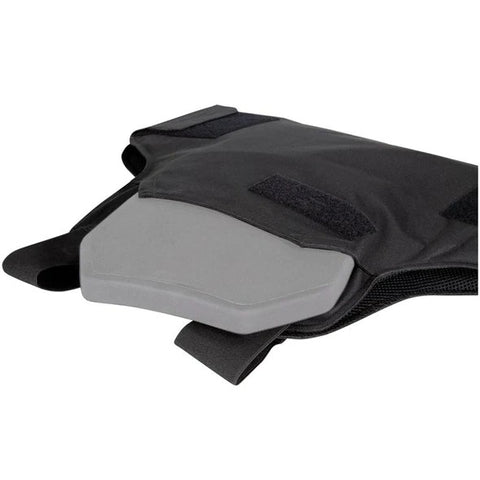
Key Considerations:
When choosing a plate carrier, consider the following:
- Weight: The overall weight of the carrier with plates can affect mobility and endurance.
- Material: The durability and comfort of the carrier material are essential for long wear.
- Protection Level: The carrier type should match the threat level you anticipate.
Types of Plate Carriers
Military Plate Carriers
Military plate carriers are engineered to withstand the rigorous demands of combat, offering unmatched durability and protection in the field.
- Designed For: Military personnel facing harsh field conditions.
- Features: Durable materials with protection against rifle and shotgun rounds.
Tactical Plate Carrier
Tactical plate carriers are tailored for dynamic operational needs, ensuring flexibility and protection in high-stakes environments.
- Designed For: Law enforcement and security in tactical situations.
- Features: Lightweight, flexible design with sufficient protection for dynamic environments.
Concealable Plate Carriers
Concealable plate carriers are designed for stealth and subtlety, providing essential protection without compromising concealability.
- Designed For: Situations requiring discretion, such as executive protection.
- Features: Thin, light materials for under-clothing wear, prioritizing concealability and comfort.
Soft Armor Plate Carriers
Soft armor plate carriers offer a versatile protection solution, blending the benefits of soft and hard armor for comprehensive safety.
- Designed For: Additional protection against fragmentation and handgun rounds.
- Features: Combines soft armor inserts with hard plates for a balanced protection approach.
Choosing the Right Carrier
The choice of carrier depends on the protection level needed and specific user requirements. Factors such as the operational environment, expected threat level, and the need for concealment or mobility play crucial roles in this decision.

Comparison Table: Plate Carrier Types
|
Type |
Designed For |
Key Features |
|
Military Plate Carriers |
Military personnel |
Durable protection against rifle and shotgun rounds |
|
Tactical Plate Carrier |
Tactical operations |
Lightweight, flexible, adequate protection |
|
Concealable Plate Carriers |
Discreet operations |
Thin, light, worn under clothing for concealability |
|
Soft Armor Plate Carriers |
Balanced protection |
Soft inserts + hard plates for comprehensive protection |
Selecting the right plate carrier for Level 3 armor plates involves a balance between protection level, material weight, and the specific operational needs of the user. Whether for military, law enforcement, executive protection, or personal safety, the right carrier can significantly enhance your protection while maintaining mobility and discretion.
Different Cuts of Level 3 Body Armor Plates
When selecting Level 3 body armor plates, it's important to understand the different cuts available. Each is designed to meet specific operational needs.
Here's a comparison table summarizing the different cuts of Level 3 body armor plates, designed to help you easily identify the right option for your needs:
|
Cut Type |
Description |
Designed For |
|
ESAPI Cut |
It provides the most comprehensive coverage and is used widely by the military. |
Maximum protection in combat environments. |
|
Shooter's Cut |
Tapered top corners enhance arm mobility, which is ideal for active shooting scenarios. |
Quick arm movement and efficient rifle handling. |
|
Swimmer's Cut |
There are more angular reductions than the shooter's cut, including rounded bottom corners for leg mobility. |
Operations requiring extensive movement and flexibility. |
|
Backpack Plates |
Longer and more rectangular, it is designed for rear protection when inserted into backpacks. |
Providing back coverage that is suitable for non-frontline roles. |
This table outlines the key features and intended use cases for each cut type, assisting in making an informed decision based on specific operational needs and scenarios.
The Bulletsafe Bulletproof Vest VP3 Level IIIA - NIJ Certified Level 3 Body Armor - Large Black
The BulletSafe Bulletproof Vest VP3 Level IIIA is a class leader in quality and value for money, making it a reputable choice for ballistic protective systems manufacturers.
Fiber level IIIA represents the highest tier of soft armor, and our tactical vest is available for $299.97. This vest can repel handgun calibers of equal or greater power, including .22 and the powerful .44 magnum.
History and Revision
The vest was first introduced in 2013 and was later upgraded to maximize its protective capabilities while providing maximum comfort.
These innovations represent the progression in ballistic material technology and users' feedback. They aim to improve protection while ensuring soldiers wear longer.
Despite the revision, BulletSafe affirms its position as a leader in protective equipment by highlighting its cutting-edge, high-quality products.
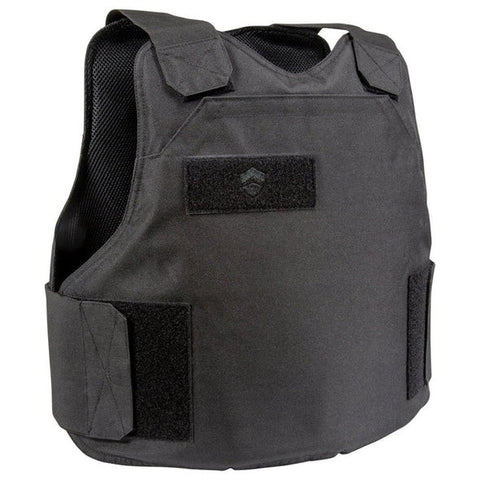 Specifications
Specifications
- Model: Vital Protection 3 (VP3) Soft Armor Vest
- Dimensions: Panel Width: 19.75", Panel Height: 15"
- Protection Area: 215 sq. in.
- Weight: 4.9 lbs
- Manufacture: Made in the USA, Color: Black
- Sizes Available: XS, S, M, L, XL, 2XL, 3XL, 4XL (Note: XS size does not include a plate pocket.)
Design and Protection
The VP3 vest has wraparound front and rear ballistic panels to protect vital organs. It also features Level IV plate compartments, allowing upgrades to higher protection levels.
Comfort and Usability
VP3 vests are cut according to the wearer’s size, resulting in a snug fit. Their unisex design and low-profile shape suit many users, including law enforcement, security personnel, and civilians.
Warranty and Improvements
Each vest has a 5-year warranty, reflecting BulletSafe's confidence in its product. The vest includes five major enhancements to increase comfort, concealability, and readiness for use.
Reasons to Choose BulletSafe VP3
The Bulletproof Vest VP3 Level IIIA from BulletSafe is undoubtedly the best option for those who combine affordability, performance, and comfort as priority features when choosing a personal protection vest. The vest with standup protection against most handgun rounds is part of BulletSafe's reputation as a producer of high-quality, life-saving bulletproof vests and apparel.
Whether for law enforcement duty, private security work, or personal safety, the BulletSafe Vest excels at all levels and maintains its top position among many competitors.
Here are the compelling reasons why choosing the BulletSafe VP3 vest is wise for anyone needing reliable body armor.
Unbeatable Cost
The BulletSafe Vest offers affordable Level IIIA protection, making it the best deal in body armor.
Superior Defense
It provides comprehensive defense from BB guns up to .44 caliber handguns, offering unmatched protection.
Comfort and Mobility
Featuring a CoolMax rear liner and fully adjustable straps, the vest is designed for comfort and a full range of motion despite the inherent discomfort of wearing bulletproof vests.
Discreet and Concealable
Designed for optimal concealment, the vest can be worn discreetly under clothing thanks to its special plate pocket.
Market Leader
BulletSafe is the best option for personal body armor, offering an affordable, upgradeable, and comfortable solution.
Final Thoughts
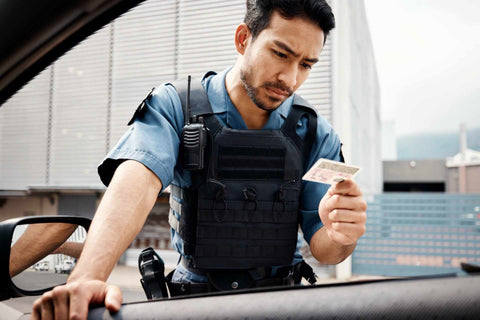
In conclusion, Level III body armor significantly advances personal protection. It offers robust defense against various ballistic threats, including high-velocity rifle rounds. This armor is crucial for law enforcement, military personnel, and civilians, providing enhanced protection in high-risk scenarios.
Level III armor's balance of protection, weight, and cost-effectiveness makes it a preferred choice over Level 3A and Level IV. It offers substantial protection without sacrificing mobility or incurring high costs.
Furthermore, the development and availability of materials like ceramic, steel, and polyethylene, along with various plate cuts such as ESAPI, shooter's, swimmer's, and backpack plates, ensure that users can select armor tailored to their specific needs and operational requirements.
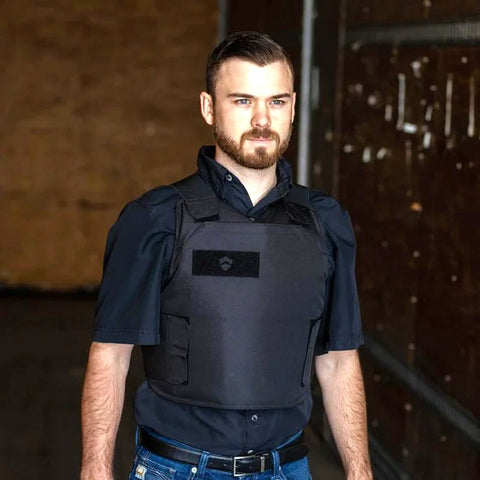 The BulletSafe Bulletproof Vest VP3 Level IIIA exemplifies these advancements. It combines affordability, superior defense, comfort, and concealability to stand out as a leading option in the market.
The BulletSafe Bulletproof Vest VP3 Level IIIA exemplifies these advancements. It combines affordability, superior defense, comfort, and concealability to stand out as a leading option in the market.
Whether for tactical applications, civilian protection, or professional use in law enforcement and security, Level III body armor and plate carriers provide a critical layer of safety in an increasingly dangerous world.

